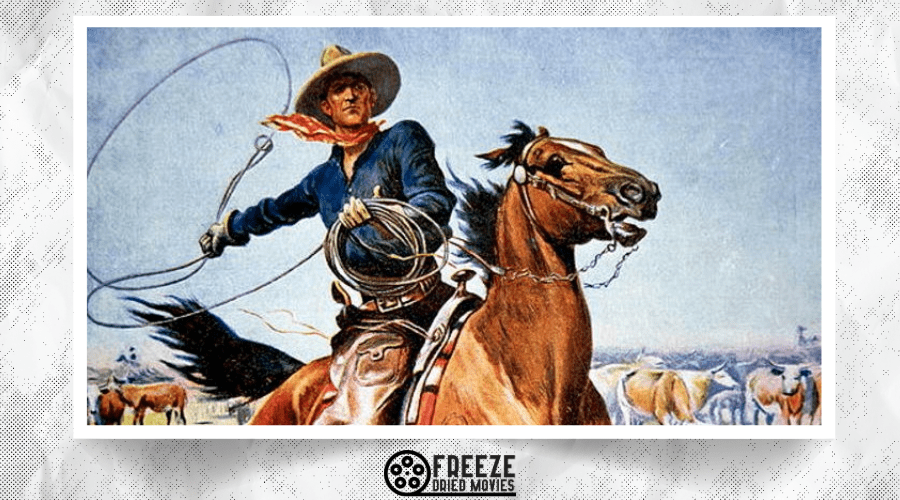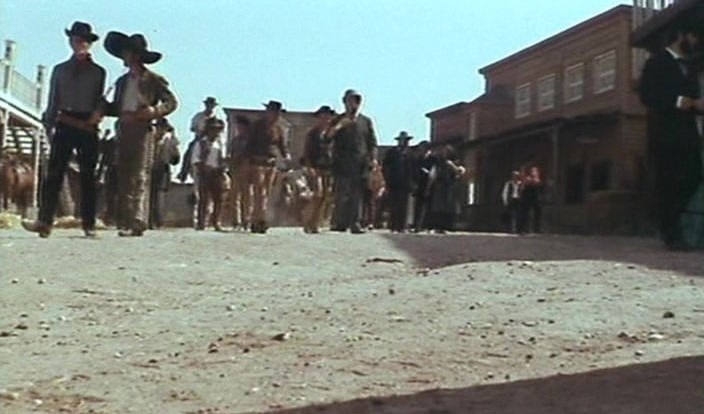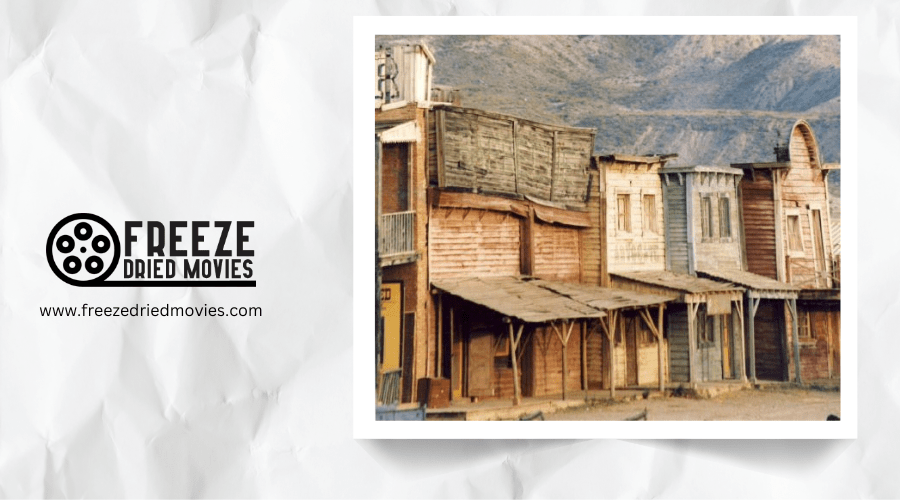Top Cross-Genre Spaghetti Westerns You Didn’t Know Existed

You might think you know Spaghetti Westerns—those dusty showdowns, Morricone whistles, and Eastwood's squint. But beyond the familiar trails lie strange, fascinating experiments that blend gunslinger tales with unexpected genres. Horror Westerns feature undead cowboys seeking revenge, while political entries transform frontier conflicts into revolutionary commentary. There's even room for surrealist visions and samurai-influenced gunslingers in this untamed cinematic territory. The most intriguing Spaghetti Westerns are often those that break all the rules.
Western-Horror Hybrids: When Cowboys Meet the Supernatural
Nightmares and tumbleweeds collide in perhaps the most daring subgenre of Spaghetti Westerns. While Sergio Leone mastered traditional gunslinger tales, a bolder breed of filmmakers ventured into supernatural territory, crafting unforgettable horror-western hybrids.
"Django Kill... If You Live, Shoot!" shocked audiences with its undead protagonist seeking revenge beyond the grave. Meanwhile, "Blind Man" features Tony Anthony as a sightless gunfighter battling devil worshippers, creating tension through his unique disability.
"Blind Dead" transported zombie tropes to the Old West with undead Templar knights terrorizing travelers. Perhaps most audacious was "Baustro," which pitted a rugged gunfighter against a vampire in the American frontier.
These films shatter genre boundaries, proving the Spaghetti Western formula could accommodate even the most chilling supernatural elements. These horror-westerns often employed dramatic lighting techniques reminiscent of early silent horror films to enhance their eerie atmosphere.

Comedy Westerns: Laughing in the Face of Danger
While the supernatural Spaghetti Westerns explored the darker side of the frontier, another subgenre took aim at the stoic gunfighter tropes with tongue firmly in cheek.
You've likely encountered Terence Hill's masterful blend of slapstick comedy in "My Name is Nobody" (1973), where he plays opposite Henry Fonda's legendary outlaw. This approach reached its zenith in the beloved Trinity series, pioneering the buddy comedy western format alongside Bud Spencer.
Films like "Ace High" (1968) and "A Genius, Two Partners and a Dupe" (1975) further showcase this winning formula, with Hill and Spencer's chemistry transforming violent westerns into comedic gold. Even darker entries like "God Forgives... I Don't" balanced grim narratives with unexpected humor, proving that laughter and gunfights aren't mutually exclusive on the frontier.
These comedic westerns captured the same effortless elegance that Paul Newman brought to his roles in 1960s cinema, balancing intensity with charm in unexpected ways.
Psychological Spaghetti Westerns: The Enemy Within
Beyond the dusty shootouts and revenge plots that defined the genre, psychological Spaghetti Westerns turned their unflinching gaze inward, exploring the tortured minds of their protagonists.
The Great Silence (1968) stands as a haunting masterpiece that examines the dehumanizing nature of violence through its bleak atmosphere and moral ambiguity. In Face to Face (1967), you'll witness traditional genre tropes subverted as characters grapple with guilt and trauma that shapes their identities.
Keoma (1976) takes a bold approach by incorporating supernatural elements into its hero's redemptive journey, while Compañeros (1970) uses character psychology to comment on broader ideological struggles. A Bullet for the General (1967) balances action with deep character studies that reveal the moral complexities behind revolutionary ideals.
This genre-blending approach resembles how Abbott and Costello pioneered horror-comedy integration while maintaining the integrity of both elements in their groundbreaking film.
Political Westerns: Revolutionary Themes on the Frontier
The internal conflict that defined psychological Spaghetti Westerns often spilled into the external world, manifesting as political struggle against oppressive systems. Films like "A Bullet for the General" and "Compañeros" thrust you into Mexico's revolutionary chaos, examining power dynamics rarely seen in traditional Westerns.
These politically-charged narratives extended beyond the Mexican Civil War to explore broader themes:
- Franco Nero's "Keoma" portrays a half-Native American hero fighting against systemic oppression
** "Face to Face" transforms a university professor into a revolutionary, blurring moral boundaries
**"Adios Compañeros" examines the revolutionary aftermath and the search for meaning post-conflict
You'll find these films uniquely position political struggle as central rather than peripheral, creating a subgenre that challenged both genre conventions and audience expectations.

Spaghetti Westerns With Strong Female Protagonists
Breaking sharply from established convention, Spaghetti Westerns featuring female protagonists created a radical shift in the typically male-dominated genre. Within this broad sub-genre, films like "Stella Della Mezza Luna" (1966) broke new ground with its revenge-seeking heroine avenging her father's murder.
You'll discover Giuliana Gemma portraying Sabata's sister in "Quel Caldo Maledetto Pomeriggio Di Un Ferragosto" (1969), offering a rare female-centered narrative in the popular series. Meanwhile, "Johnny Yuma" (1966) features Erika Blanc as a determined female bounty hunter.
"Sugar Colt" (1970) puts a saloon owner at the center of gang warfare, while "Beyond the Valleys" (1971) follows Ingrid Steeger's transformation into an outlaw after her husband's death. These Western films challenged traditional gender roles when few others dared.
Gothic and Surrealist Elements in Italian Westerns
While female protagonists challenged gender norms in Spaghetti Westerns, another innovative current was reshaping the genre through dreamlike visuals and haunting atmospheres. Beyond Sergio Leone's iconic style, you'll find films that blend Gothic horror with dusty frontier tales.
Django, Kill... If You Live, Shoot! merges Western tropes with supernatural elements, creating a nightmarish vision far removed from traditional cowboy stories. The Great Silence trades desert landscapes for surreal, snow-covered settings where a mute protagonist faces existential challenges.
These films use unconventional techniques to explore deeper themes:
- Cemetery Without Crosses employs a melancholic, haunting atmosphere for its revenge tale
- Keoma utilizes psychedelic visuals and dreamlike narrative structure
- Dead Men Ride features ghostly, floating corpses in surreal nightmare sequences
Eastern-Influenced Spaghetti Westerns: Samurai in the Wild West
Among the most fascinating cross-genre experiments in Western cinema, Eastern-influenced Spaghetti Westerns create an engrossing fusion where samurai traditions meet dusty frontier tales. "Red Sun" (1971) exemplifies this blend, pairing Charles Bronson with legendary samurai actor Toshiro Mifune in a cultural collision that would have intrigued Sergio Leone himself.
You'll find Quentin Tarantino paying homage to this tradition in "Sukiyaki Western Django" (2007), which reverses the formula by placing Western tropes in a Japanese setting. Similarly, "The Warrior and the Blind Man" (1975) teams a gunslinger with a character reminiscent of Zatoichi, while "The Lady Gambles" offers a rare female perspective on this East-meets-West dynamic. These films demonstrate how the stoic samurai code translates perfectly to Leone's vision of the American frontier.
Musical Spaghetti Westerns: Beyond Morricone's Iconic Scores
The rich tapestry of musical Spaghetti Westerns extends far beyond Ennio Morricone's legendary compositions, creating a distinctive sub-genre where gunfights and vocal performances share equal billing.
You'll find unexpected melodic elements throughout the genre's hidden gems. "God Forgives... I Don't" showcases Terence Hill and Bud Spencer performing gritty musical numbers, while "Run, Man, Run" abandons Morricone-style scoring for catchy Latin-inspired revolutionary songs.
These musical Spaghetti Westerns offer surprising variety:
- Shakespeare meets folk music in "Johnny Hamlet"
- Whistled melancholic tunes create atmosphere in "The Grand Duel"
- Upbeat hoedown themes establish comedy in "The Stranger Returns"
The fusion of Western settings with diverse musical approaches demonstrates how these films transcended simple genre categorization, creating uniquely entertaining cross-genre experiences.



